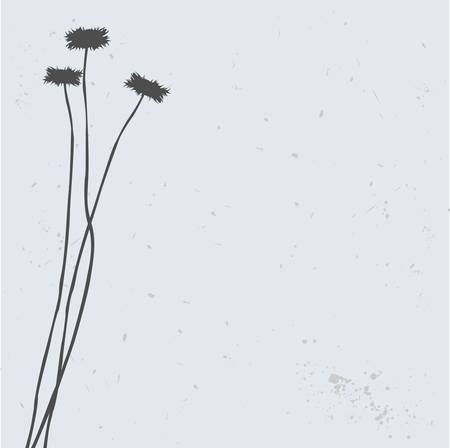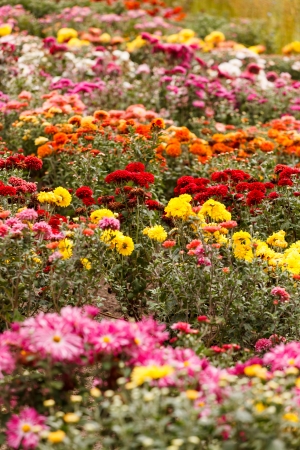Choosing the Right Wildflower Seeds
Starting your wildflower garden begins with choosing the right seeds, and this step can make all the difference in your success. The best approach is to select native wildflower varieties that are well-suited for your local climate and soil conditions. Native seeds are naturally adapted to your region’s weather patterns, rainfall, and even native pollinators, giving them a much better chance to thrive with less maintenance. Before you purchase any seeds, take a look at your planting area and determine whether you have full sun, partial shade, or mostly shade—different wildflowers will prefer different light conditions. Also, consider your soil type: Is it sandy, clay-heavy, rocky, or loamy? Many seed packets or reputable seed suppliers provide information about which species do best in each soil type. For the best results, shop from local nurseries or specialized wildflower seed companies that offer regional seed mixes tailored to your zip code or state. Not only does this boost your chances of a successful bloom, but it also supports local ecosystems and wildlife. Remember, patience is key—some native wildflowers may take a year or two to establish and bloom fully, but the payoff is a beautiful, resilient landscape that reflects the unique character of your area.
Preparing Your Planting Site
Before you even open your packet of wildflower seeds, setting up the right environment is key to a thriving garden. Wildflowers are hardy, but they need a good foundation to flourish. Here’s how you can prep your planting site for the best results.
Soil Preparation
Start by choosing an area with well-draining soil. While wildflowers are adaptable, overly compacted or clay-heavy soils can hinder their growth. Use a shovel or garden fork to loosen the top 2-3 inches of soil. This makes it easier for the seeds to take root and access nutrients.
| Soil Type | Preparation Tips |
|---|---|
| Sandy | Add organic compost to retain moisture |
| Clay | Mix in sand or peat moss to improve drainage |
| Loamy | Ideal – just remove debris and loosen soil |
Weed Removal
Wildflowers don’t like competition. Clear out all weeds, grass, and old plant material from your chosen spot. You can do this by hand-pulling, hoeing, or using a non-persistent herbicide if needed. Make sure to remove roots to prevent regrowth.
Quick Tip:
If you’re working with a large area, consider covering the site with black plastic for a few weeks before planting to smother persistent weeds naturally.
Sunlight Requirements
The majority of wildflowers thrive in full sun—at least 6 hours of direct sunlight per day. Observe your site throughout the day to ensure it isn’t shaded by trees or structures during peak sunlight hours.
| Sun Exposure | Suitable Wildflower Types |
|---|---|
| Full Sun (6+ hours) | Most native and annual wildflowers |
| Partial Shade (4–6 hours) | Certain woodland or shade-tolerant varieties |
| Full Shade (<4 hours) | Difficult for most wildflowers; choose ferns or groundcovers instead |
Pro Tip:
If your chosen area gets less than 6 hours of sun, look for regional wildflower mixes formulated for partial shade.

3. Sowing Wildflower Seeds
Planting wildflower seeds at the right time and in the right way is key to a thriving, colorful garden. Timing matters—most regions in the U.S. have two ideal windows for sowing: fall and early spring. In cooler northern states, late fall (just before the ground freezes) allows seeds to settle in and naturally stratify over winter, which helps many native species germinate come spring. In milder southern areas, early spring planting—after the last frost date—gives seeds the warmth they need to sprout.
Step 1: Check Your Local Frost Dates
Start by finding your area’s average last frost date. This info helps determine whether you should plant in the fall or spring for best results. The USDA Plant Hardiness Zone Map is a helpful resource for this.
Step 2: Prepare Your Seed Mix
If you’re using a commercial wildflower seed blend, give it a gentle shake or stir to distribute small and large seeds evenly. For DIY mixes, blend species that match your local climate and sun exposure. Mixing the seeds with sand (about four parts sand to one part seed) helps distribute them more evenly during sowing.
Step 3: Sow Seeds Evenly
Scatter your seeds by hand or with a broadcast spreader over your prepared soil. Avoid burying them too deep; most wildflowers prefer light for germination. Aim for no more than 1/8 inch of soil covering the seeds—just a light raking or pressing down with your feet or a board works perfectly.
Pro Tip:
Divide your seed mix in half and sow in two directions—once north to south, then east to west—for even coverage.
Step 4: Water Gently
After planting, use a fine mist or gentle spray to moisten the soil without washing away seeds. Keep the area consistently damp (not soggy) until seedlings are established, usually within 2–4 weeks depending on weather and wildflower species.
Patience Pays Off
Wildflowers may take longer to sprout than typical garden plants, but don’t be discouraged if you don’t see instant results. Some species need extra time or specific conditions like cold stratification to break dormancy and grow strong roots before blooming. Stick with it—your effort will be rewarded with months of vibrant color!
4. Caring for Seedlings and Young Plants
Once your wildflower seeds have sprouted, giving your seedlings the right care is crucial for a healthy, vibrant garden. Here’s what you need to know about watering, thinning, and protecting your plants from common challenges faced in American gardens.
Watering Tips for Wildflower Seedlings
Wildflower seedlings require consistent moisture to establish strong roots, especially during the early stages. However, overwatering can be just as harmful as underwatering. Check the soil regularly; it should feel damp but not soggy. In most U.S. climates, watering every other day is sufficient unless there’s heavy rain or drought. Early morning is the best time to water so foliage can dry out during the day, reducing the risk of mildew.
Thinning: Giving Your Seedlings Space
As seedlings grow, overcrowding can become an issue. Thinning helps ensure each plant has enough space, nutrients, and light. When your seedlings are about 2-3 inches tall, gently remove the weaker plants, leaving 6-12 inches between the strongest ones, depending on the wildflower variety. This encourages healthier growth and better blooms later in the season.
Thinning Guidelines by Wildflower Type
| Wildflower Type | Recommended Spacing |
|---|---|
| Annuals (e.g., poppies) | 6-8 inches apart |
| Perennials (e.g., coneflowers) | 10-12 inches apart |
Protecting Young Plants from Pests and Weather
Pests like aphids and slugs can target tender wildflower seedlings. Inspect your plants regularly for signs of damage or insects. Use organic solutions such as neem oil or introduce beneficial insects like ladybugs if needed. Weather challenges—such as late frosts or strong winds—can also threaten young plants. Consider using lightweight row covers or temporary windbreaks if severe conditions are expected in your region.
Quick Reference: Common Threats & Solutions
| Threat | Solution |
|---|---|
| Aphids/Slugs | Handpick pests; use organic sprays |
| Drought | Mulch around base; water deeply when needed |
| Frost/Wind | Use row covers or stake taller seedlings |
Caring properly for your wildflower seedlings ensures they grow into robust, beautiful plants that will brighten your garden all season long.
5. Encouraging Healthy Growth and Blooms
Once your wildflower seeds have sprouted and started to grow, it’s important to create an environment that allows them to thrive. There are several practical steps you can take to help your wildflowers reach their full potential and produce a stunning display of blooms.
Mulching for Moisture and Weed Control
Applying a thin layer of mulch around your wildflowers can help retain soil moisture and reduce weed competition. Use organic mulches like straw or shredded leaves, but keep the mulch light—too much can smother tender seedlings. Mulch also helps maintain a stable soil temperature, which is especially helpful during unpredictable spring weather.
Watering Wisely
Wildflowers are generally drought-tolerant once established, but regular watering is crucial during the first few weeks after germination. Water deeply but infrequently to encourage strong root development. Early morning watering is best, as it allows foliage to dry before evening and helps prevent disease.
Fertilizing Sparingly
Most native wildflowers don’t need much fertilizer—in fact, too much can cause leggy growth with fewer blooms. If your soil is particularly poor, consider using a balanced, slow-release fertilizer at half strength once seedlings are a few inches tall. Avoid high-nitrogen fertilizers, which favor leaf growth over flowers.
Thinning for Airflow
If your wildflowers are growing too close together, thinning them out can improve air circulation and reduce the risk of disease. Gently remove weaker seedlings so that the strongest plants have enough space to develop fully—generally, aim for 6 to 12 inches apart depending on the species.
Ongoing Maintenance Tips
Keep an eye out for invasive weeds and remove them promptly by hand to avoid disturbing delicate roots. Deadheading spent blooms can encourage some wildflower varieties to produce even more flowers throughout the season. Finally, resist the urge to mow or cut back your wildflowers until late fall—this gives pollinators time to benefit from every last bloom and allows seeds to drop naturally for next year’s growth.
6. Enjoying and Maintaining Your Wildflower Garden
Make the Most of Your Blooming Sanctuary
Once your wildflowers are in full bloom, take time to truly enjoy their beauty! Whether you create a dedicated seating area nearby or simply pause each morning with a cup of coffee to admire the colors and wildlife, savoring your wildflower garden can be a daily delight. Invite friends and family for backyard gatherings surrounded by vibrant petals, or photograph the changing landscape throughout the seasons to capture its evolution.
Support Local Pollinators
Wildflowers are a magnet for bees, butterflies, hummingbirds, and other pollinators. To encourage even more visitors, consider adding a shallow water dish or small bee hotel near your garden. Avoid using pesticides that can harm beneficial insects. Instead, embrace the natural balance your wildflower patch creates—pollinators will help your plants thrive and contribute to your local ecosystem’s health.
Keep Your Garden Thriving Year After Year
To ensure continued blooms, allow some of your wildflowers to go to seed at the end of the season. This self-seeding process helps establish future generations of flowers with little effort on your part. If you’d like to expand or fill in bare spots, collect seeds from mature pods and sow them in late fall or early spring. Lightly rake the soil after spreading seeds to promote good soil contact.
Simple Maintenance Tips
Wildflowers require minimal upkeep compared to traditional gardens, but a few simple steps can keep them looking their best. Remove invasive weeds by hand to prevent competition, and trim back spent blooms (deadheading) if you want to prolong flowering. In especially dry summers, occasional deep watering may be helpful—but generally, native wildflowers are tough and drought-tolerant once established.
Cultivate Joy and Biodiversity
Your wildflower garden is more than just a pretty view; it’s an important habitat supporting local wildlife and promoting biodiversity. By enjoying, maintaining, and reseeding your plot each year, you’re creating a sustainable oasis that benefits both people and nature for seasons to come.


